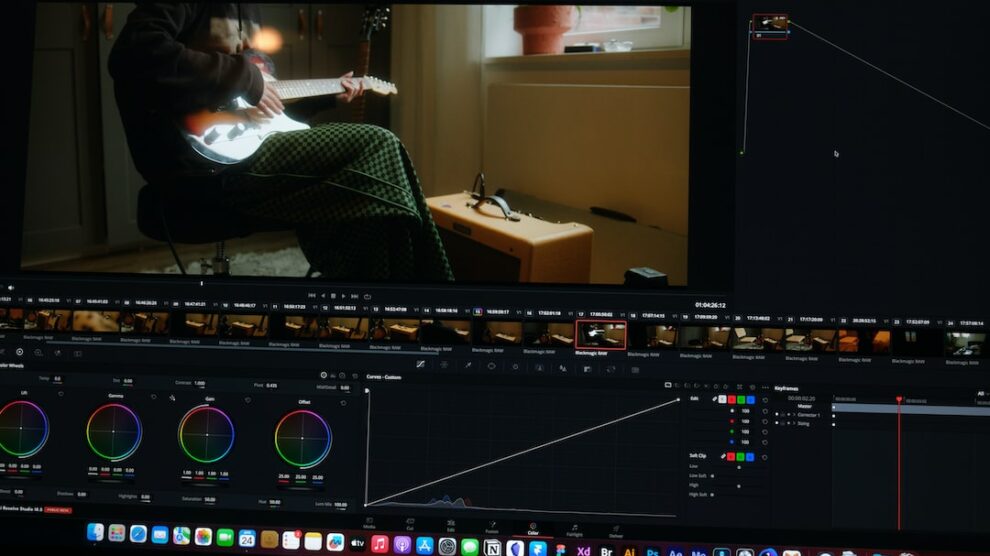In today’s digital age, video content has become increasingly popular and prevalent across various platforms. From social media to websites, videos have become a powerful tool for communication and engagement. However, simply creating and uploading videos is not enough to ensure success. Just like with any other form of content, video content also needs to be optimized for search engines in order to reach its target audience effectively. This is where SEO for video content comes into play.
SEO, or search engine optimization, is the practice of optimizing content to improve its visibility and ranking on search engine results pages (SERPs). When it comes to video content, SEO involves optimizing various elements such as titles, descriptions, tags, and metadata to make it more discoverable by search engines. By implementing effective SEO strategies for video content, businesses and content creators can increase their chances of reaching a wider audience and driving more traffic to their videos.
Importance of Video SEO in Digital Marketing
Video SEO plays a crucial role in digital marketing for several reasons. Firstly, optimizing video content for search engines can significantly improve brand visibility. When a video is properly optimized, it has a higher chance of appearing in relevant search results, making it more likely to be seen by potential viewers. This increased visibility can help businesses and content creators gain more exposure and reach a larger audience.
Secondly, video SEO can enhance engagement with the target audience. By optimizing video content with relevant keywords and tags, businesses can attract viewers who are specifically interested in the topic or industry they are targeting. This targeted approach ensures that the right audience is being reached, leading to higher engagement rates and increased interaction with the video.
Furthermore, video SEO can also contribute to building brand authority and credibility. When a video appears in search results and ranks highly, it gives the impression that the content is valuable and trustworthy. This can help businesses establish themselves as industry leaders and experts, leading to increased trust and loyalty from viewers.
Understanding Video Search Engines
Video search engines are specialized search engines that focus specifically on indexing and ranking video content. These search engines work by crawling the web for video content and analyzing various factors to determine the relevance and quality of each video. Some popular video search engines include YouTube, Vimeo, and Dailymotion.
Video search engines use algorithms to analyze various elements of a video, such as titles, descriptions, tags, and metadata, to determine its relevance to a user’s search query. These algorithms take into account factors such as keyword usage, engagement metrics (such as views, likes, and comments), and user behavior to rank videos in search results.
YouTube is the largest and most popular video search engine, with billions of users and videos uploaded every day. It is owned by Google, which means that optimizing videos for YouTube can also have an impact on their visibility in Google search results. Vimeo is another popular video platform that focuses on high-quality content and is often used by professionals in creative industries. Dailymotion is a video-sharing platform that allows users to discover and watch videos from a wide range of categories.
Creating SEO-Friendly Video Content
Creating SEO-friendly video content involves several key considerations. Firstly, it is important to focus on creating high-quality content that is valuable and relevant to the target audience. This means understanding the needs and interests of the target audience and creating videos that address those needs effectively. By providing valuable content, businesses can increase engagement and encourage viewers to share the video with others.
In addition to quality content, it is also important to pay attention to technical aspects of video production. This includes factors such as video resolution, aspect ratio, and file format. Optimizing these technical aspects can improve the overall viewing experience for viewers and make the video more accessible across different devices and platforms.
Another important aspect of creating SEO-friendly video content is optimizing the video’s length. While there is no one-size-fits-all answer to how long a video should be, it is generally recommended to keep videos concise and to the point. This helps to maintain viewer engagement and reduces the risk of viewers clicking away before the video has finished.
Video Title and Description Optimization
The title and description of a video play a crucial role in its discoverability and ranking on search engine results pages. When optimizing video titles, it is important to include relevant keywords that accurately describe the content of the video. This helps search engines understand what the video is about and improves its chances of appearing in relevant search results.
When writing video descriptions, it is important to provide a concise summary of the video’s content. This includes mentioning key points, topics, or takeaways from the video. It is also recommended to include relevant keywords in the description to further improve its visibility in search results.
In addition to keywords, it is also important to make video titles and descriptions compelling and engaging for viewers. This can be achieved by using descriptive language, highlighting key benefits or features of the video, and creating a sense of curiosity or urgency.
For example, instead of simply titling a video “How to Bake a Cake,” a more compelling title could be “The Ultimate Guide to Baking the Perfect Cake: Tips and Tricks from a Professional Baker.” This title not only includes relevant keywords but also creates intrigue and makes viewers more likely to click on the video.
Using Video Transcripts for SEO

Video transcripts are written versions of the spoken content in a video. They play an important role in SEO as they provide search engines with text-based content that can be indexed and analyzed. By including video transcripts, businesses can improve the accessibility and discoverability of their videos.
One of the main benefits of using video transcripts for SEO is that they provide additional keyword-rich content that can help improve the ranking of the video in search results. By including relevant keywords in the transcript, businesses can increase the chances of their videos appearing in relevant search queries.
Creating video transcripts is relatively simple and can be done manually or with the help of transcription software. Manually creating a transcript involves listening to the video and typing out the spoken content word-for-word. Transcription software, on the other hand, uses speech recognition technology to automatically transcribe the video.
When using video transcripts, it is important to format them properly for SEO. This includes using headings, bullet points, and paragraphs to make the transcript more readable and scannable for both search engines and viewers.
Video Metadata and Tags for Improved Visibility
Video metadata and tags are additional elements that can be optimized to improve the visibility and discoverability of video content. Metadata refers to information about the video, such as its title, description, category, and duration. Tags, on the other hand, are keywords or phrases that are associated with the video.
When optimizing video metadata, it is important to include relevant keywords that accurately describe the content of the video. This helps search engines understand what the video is about and improves its chances of appearing in relevant search results. It is also recommended to include additional information such as the date of publication, location, and any relevant hashtags.
Tags play a similar role in improving the visibility of videos. By including relevant tags, businesses can increase the chances of their videos appearing in search results when users search for those specific keywords or phrases. It is important to choose tags that accurately describe the content of the video and are relevant to the target audience.
For example, if a video is about “healthy smoothie recipes,” some relevant tags could include “smoothie recipes,” “healthy eating,” “healthy lifestyle,” and “nutrition.” These tags help search engines understand what the video is about and improve its chances of appearing in relevant search results.
Video Sitemaps and Structured Data for SEO
Video sitemaps and structured data are additional tools that can be used to improve the visibility and ranking of video content in search results. A video sitemap is a file that provides search engines with information about the videos on a website. It includes details such as the video’s URL, title, description, duration, and thumbnail image.
By submitting a video sitemap to search engines, businesses can ensure that their videos are properly indexed and analyzed. This can help improve the visibility of the videos in search results and increase their chances of being discovered by users.
Structured data, on the other hand, is a way of organizing and marking up content on a website to provide additional information to search engines. This can include details such as the video’s title, description, duration, and thumbnail image. By including structured data markup on a webpage that contains a video, businesses can provide search engines with more information about the video and improve its chances of appearing in relevant search results.
Promoting Video Content for Better SEO Results
Promoting video content is an important aspect of video SEO as it helps increase its visibility and reach. There are several strategies that businesses can use to promote their video content effectively.
One strategy is to share videos on social media platforms such as Facebook, Twitter, and Instagram. By sharing videos on these platforms, businesses can reach a wider audience and increase the chances of their videos being shared by others. It is important to optimize social media posts by including relevant hashtags, captions, and descriptions that accurately describe the content of the video.
Another strategy is to embed videos on relevant websites or blogs. By reaching out to industry influencers or websites that have a similar target audience, businesses can increase the visibility of their videos and attract more viewers. It is important to include relevant keywords and descriptions when embedding videos to improve their chances of appearing in search results.
Additionally, businesses can also consider running paid advertising campaigns to promote their video content. Platforms such as YouTube and Facebook offer advertising options that allow businesses to target specific demographics and interests. By running targeted ads, businesses can increase the visibility of their videos and reach a larger audience.
Measuring Video SEO Success with Analytics
Measuring the success of video SEO efforts is crucial in order to understand what is working and what needs improvement. There are several metrics that can be tracked to measure the success of video SEO.
One important metric is the number of views a video receives. This metric indicates how many people have watched the video and can provide insights into its popularity and reach. It is important to track views over time to identify any trends or patterns in viewer behavior.
Another important metric is engagement metrics, such as likes, comments, and shares. These metrics indicate how viewers are interacting with the video and can provide insights into its effectiveness and appeal. It is important to track engagement metrics to understand how viewers are responding to the video and make any necessary adjustments to improve engagement.
Furthermore, it is also important to track metrics such as click-through rate (CTR) and conversion rate. CTR measures the percentage of viewers who click on a video after seeing it in search results or on a website. Conversion rate measures the percentage of viewers who take a desired action, such as making a purchase or signing up for a newsletter, after watching a video.
Conclusion:
In conclusion, video SEO plays a crucial role in digital marketing by improving the visibility and discoverability of video content. By optimizing various elements such as titles, descriptions, tags, and metadata, businesses can increase their chances of reaching a wider audience and driving more traffic to their videos. It is important to create high-quality content that is valuable and relevant to the target audience, as well as optimize technical aspects such as video resolution and length.
Video titles and descriptions should be optimized with relevant keywords and compelling language to attract viewers and improve search engine visibility. Video transcripts can also be used to improve SEO by providing additional keyword-rich content that can be indexed by search engines. Video metadata and tags should be optimized with relevant keywords to improve the visibility of videos in search results.
Promoting video content through social media, embedding on relevant websites, and running paid advertising campaigns can help increase its visibility and reach. Measuring the success of video SEO efforts through metrics such as views, engagement, CTR, and conversion rate is crucial in order to understand what is working and make any necessary adjustments. Overall, video SEO is an essential component of digital marketing that can significantly improve brand visibility, engagement, and credibility.
FAQs
What is SEO for Video Content?
SEO for Video Content refers to the process of optimizing video content to rank higher in search engine results pages (SERPs) and increase visibility, traffic, and engagement.
Why is SEO for Video Content important?
SEO for Video Content is important because it helps your videos get discovered by your target audience, increases your brand’s visibility, and drives more traffic to your website. It also helps improve the user experience by making it easier for viewers to find and watch your videos.
What are some best practices for optimizing video content for SEO?
Some best practices for optimizing video content for SEO include creating high-quality, engaging videos, optimizing video titles and descriptions with relevant keywords, using video sitemaps, adding closed captions and transcripts, and promoting your videos on social media and other channels.
What are some common mistakes to avoid when optimizing video content for SEO?
Some common mistakes to avoid when optimizing video content for SEO include using irrelevant or misleading titles and descriptions, neglecting to add closed captions or transcripts, using low-quality video or audio, and failing to promote your videos on social media and other channels.
How can I measure the success of my SEO for Video Content efforts?
You can measure the success of your SEO for Video Content efforts by tracking metrics such as video views, engagement rates, click-through rates, and conversion rates. You can also use tools like Google Analytics and YouTube Analytics to monitor your video performance and make data-driven decisions to improve your SEO strategy.









Add Comment